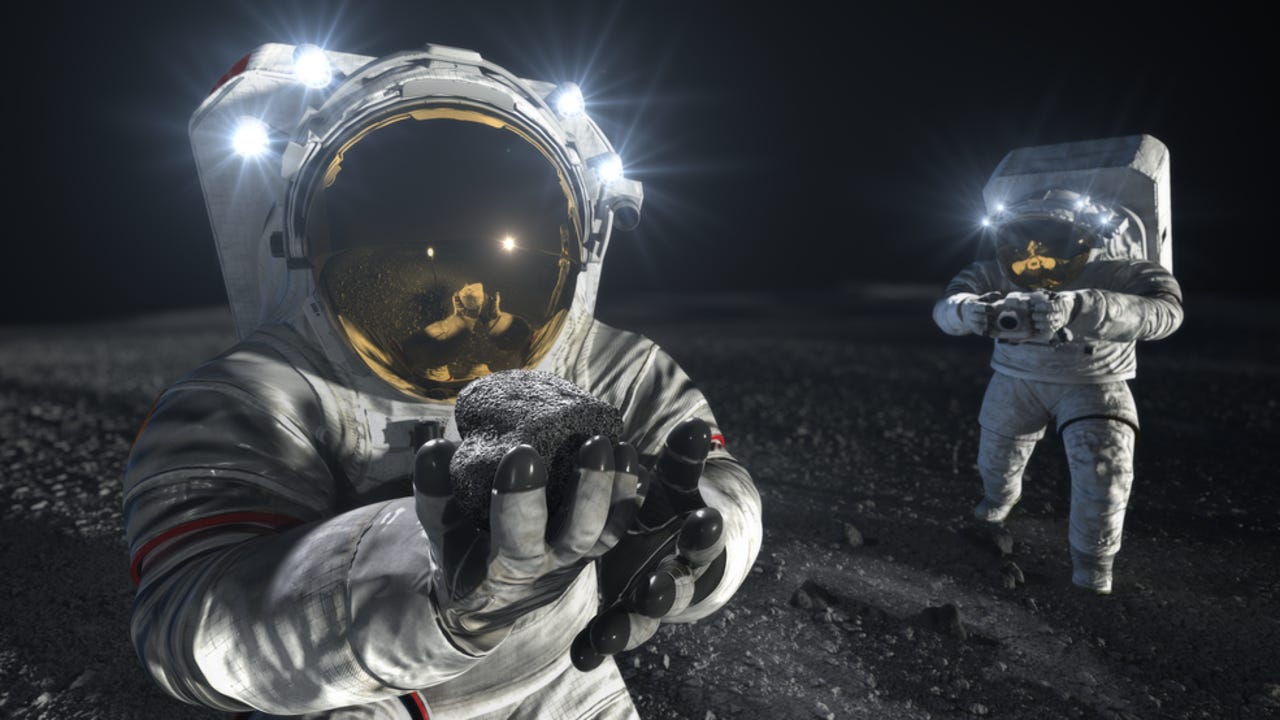































 NASA
NASA It's been an exciting summer for space fans: NASA has set a launch date for Artemis 1, the first stage of an ambitious return to the Moon, and last month saw the release of the first full-color images from the James Webb Space Telescope, giving humanity its farthest glimpse into space ever.
NASA's current work is arguably the most inspiring it's been in the last 50 years, lending support to one of its key missions: to support education efforts in science, technology, engineering and mathematics (STEM).
And there's definitely evidence that space exploration inspires young people to study science.
As the Council on Foreign Relations noted last year, the percentage of graduates holding bachelor's degrees in science and engineering fields peaked in the late 1960s, around the time of the moon landing, but then declined slowly for several decades before the federal government began to reemphasize the importance of STEM education. Meanwhile, a 2009 study in the journal Nature found that the Apollo program had inspired half of scientists surveyed.
Surely, the next generation of astronauts and scientists are watching NASA's latest feats of science and technology and dreaming of their own future adventures.
It's important to consider, however, whether the space pioneers of tomorrow are receiving the support they need to make their dreams a reality.
In a recently published letter, more than 600 leaders from nonprofits, academia and the tech world called for more computer science in schools. "The United States leads the world in technology, yet only 5% of our high school students study computer science," the letter notes.
Certainly, there's been progress over the years. More than half of schools offer computer science, the letter notes -- up from 35% in 2018. On the other hand, Hispanic students, English language learners, students with disabilities, and economically disadvantaged students are underrepresented in high school computer science, relative to their state populations.
There's even some evidence that we're getting worse at encouraging students from different backgrounds to enter certain STEM fields. Last year, for instance, the National Sciences Foundation (NSF) published data showing the share of women receiving bachelor's degrees in computer science declined from 27% in 1998 to 19.9% in 2018. Over the past two decades, the share of women receiving bachelor's degrees in mathematics and statistics also declined.
"The academic pipeline for women earning advanced degrees in computer sciences may be affected, to the extent that graduate enrolment will be affected by a smaller proportion of women receiving a bachelor's in computer sciences," the NSF report says.
That's a concerning trend, given the opportunities opening up right now for graduate students in technical fields. The fast-growing space economy has clear opportunities for young entrepreneurs, given the government's contracting requirements, which require doing business with small companies.
"So if I were a grad student with a neat idea, I wouldn't let the fact that I'm a one-person company frighten me away from doing the business," NASA official Kenneth Bowersox said earlier this year. "If you've got the passion and you've got the ideas, you can find a way to get built into the system and become part of what we do in low Earth orbit and what we'll do beyond low Earth orbit."
While NASA's current initiatives involve developing cutting-edge technologies and advancing humanity's understanding of the universe, they also involve efforts specifically aimed at encouraging diverse participation in STEM fields. Notably, the Artemis mission -- named after Apollo's twin sister -- will culminate with NASA landing the first woman and first person of color on the Moon.
Before real astronauts return to the Moon, NASA is partnering with LEGO Education to send two figurines, named Kate and Kyle, to the Moon aboard Artemis 1 with the intent of inspiring young children to learn about space. The two figurines are the main characters of the Build to Launch: A STEAM Exploration Series, a 10-episode tool focused on science, technology, engineering, art and math.
The partnership is one of many collaborations and initiatives from NASA designed to get students excited about the Artemis mission. The space agency is partnering with organizations like the Girl Scouts of the USA and hosting competitions like the Lunabotics and Lunabotics Junior challenges, which tasked students with building lunar robots. NASA has also produced a series of graphic novels and digital platforms, First Woman, that tells the fictional story of the first woman to explore the Moon.
The flurry of activity this year is just the beginning of a new era of space exploration. Scientists from NASA and the private sector are embarking on long-term projects to explore Mars, study exoplanets and explore the outer bounds of the universe.
But to truly succeed in space, the next generation will need more than dreams and encouragement -- they'll need real support on the ground, too.
ZDNet's Monday Opener is our opening take on the week in tech, written by members of our editorial team.
 Горячие метки:
3. Инновации
1. Космос
Горячие метки:
3. Инновации
1. Космос